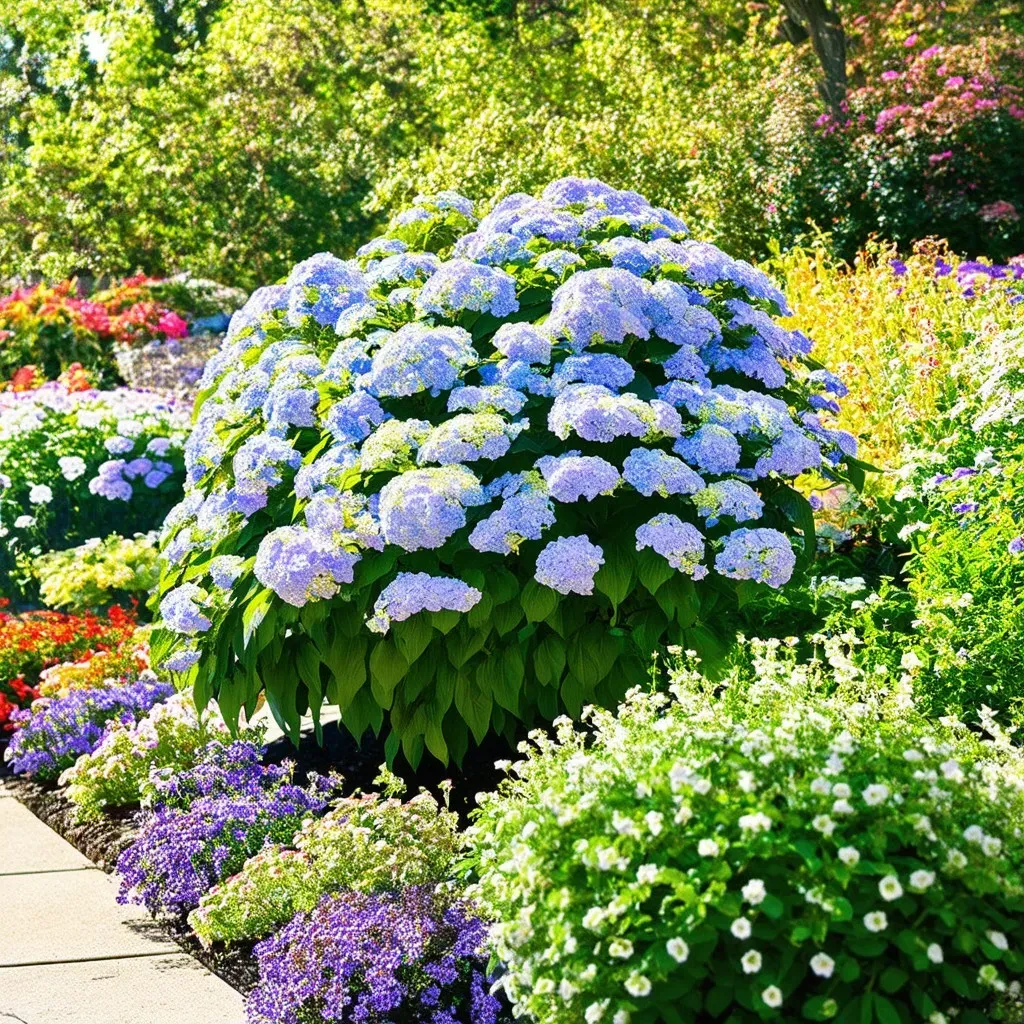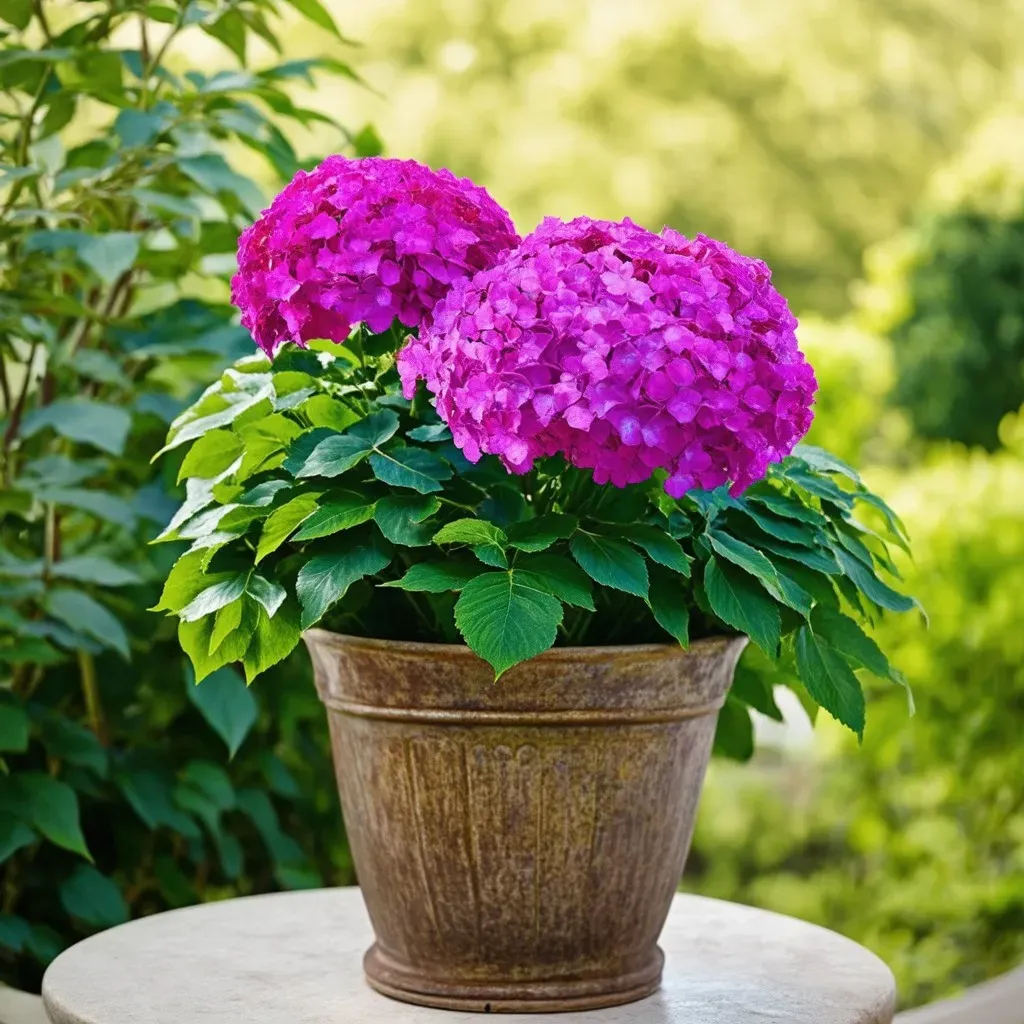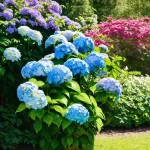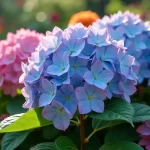Flare hydrangea, scientifically known as Hydrangea paniculata ‘Kolmavesu’, is a breathtaking plant renowned for its cone-shaped white flowers that transition to a fiery reddish-pink over time. This hardy shrub not only offers a visual spectacle but also adds texture and depth to any garden landscape.
Characteristics of Flare Hydrangea
Compact Growth
Flare Hydrangea is admired for its compact size, typically growing 2 to 3 feet tall and wide. This makes it an ideal choice for small gardens, containers, or as part of a mixed border.

Flowering Cycle
The bloom season for Flare Hydrangeas begins in summer. Initially, the flowers are a stunning white, which later culminates in shades of pink and red as the season progresses. This gradual change adds a dynamic visual appeal throughout the blooming season.
Hardiness and Care
Flare Hydrangeas are exceptionally resilient, being hardy in cold temperatures down to -40 degrees Fahrenheit. They thrive in USDA plant hardiness zones 3 to 8, making them versatile for various climates.
| Feature | Description |
|---|---|
| Height | 2 to 3 feet |
| Width | 2 to 3 feet |
| Bloom Color | White, transitioning to reddish-pink |
| Hardiness Zone | 3-8 |
| Flowering Period | Summer to Fall |
| Maintenance Level | Low |
Adaptability
The Flare Hydrangea is adaptable, flourishing in various soil types, provided the soil is well-drained. It can be planted in full sun to partial shade, with a preference for morning sun.
Planting and Care Tips
To ensure your Flare Hydrangea thrives, consider the following guidelines:
- Soil Requirements: Use well-drained, fertile soil. A soil pH level between 5.5 and 6.5 is optimal.
- Watering: Water regularly, especially during dry spells, ensuring the soil remains consistently moist but not waterlogged.
- Fertilization: Apply a balanced fertilizer, such as a 15-30-15 ratio, in early spring to promote healthy bloom production.
- Pruning: Prune in the fall after flowering. Avoid cutting in spring, as this can hinder bloom development.

Advantages of Flare Hydrangea
- Low Maintenance: Flare Hydrangea requires minimal care, making it perfect for novice gardeners or those short on time.
- Attractive Foliage: Even when not in bloom, the plant’s foliage is lush and adds greenery to your landscape.
- Versatile Use: Ideal for cottage gardens, foundation plantings, or container gardens. Its height makes it suitable as a ‘thriller’ in container combinations.
- Seasonal Interest: With changing colors, this hydrangea provides visual interest throughout multiple seasons.
Reference Video
Common Uses of Flare Hydrangea
- Garden Borders: Flare Hydrangea can be planted in rows to form an attractive flowering hedge.
- Containers and Pots: Its compact nature allows it to thrive in pots on patios or entryways.
- Cut Flowers: The striking blooms are also excellent for cut flower arrangements, bringing the beauty of your garden indoors.
Design Ideas
To incorporate Flare Hydrangea into your garden, consider these design tips:
- Grouping Plants: Plant in clusters for a more dramatic visual impact.
- Mixed Borders: Combine with Other perennials or annuals to create a colorful garden display.
- Walkway Accents: Position along pathways or entryways to welcome guests with vibrant blooms.

FAQs About Flare Hydrangea
How often should I water my Flare Hydrangea?
Typically, water the plant once a week, or more frequently during particularly dry spells. Ensure the soil remains moist, but not soggy.
When is the best time to prune Flare Hydrangea?
Pruning is best done in the fall after the blooms have faded, ensuring a robust flowering cycle for the following year.
Can Flare Hydrangea thrive in containers?
Yes, Flare Hydrangea’s compact size makes it ideal for container gardening. Choose a large enough pot and ensure proper drainage.
What pests should I watch for with Flare Hydrangea?
Keep an eye out for pests such as aphids and spider mites. Regular inspection and prompt action can prevent infestations.
Are Flare Hydrangeas deer resistant?
While no plant is entirely deer-proof, Flare Hydrangea is generally considered deer resistant due to its texture and taste.
Conclusion
Flare Hydrangea is not just a plant; it’s an investment in year-round beauty for your garden. Its stunning flowers, compact size, and resilience to harsh climates make it a must-have for any gardening enthusiast. Whether you choose to plant it along walkways, in mixed borders, or pot it up for your patio, Flare Hydrangea will undoubtedly elevate your outdoor space while requiring minimal effort in upkeep.
For more information on selecting and growing the perfect hydrangeas, you can visit Plant Addicts.

With the right care and perfect setting, the Flare Hydrangea will become the stand-out plant in your landscape, bringing harmonic beauty and a splash of color to your life.


